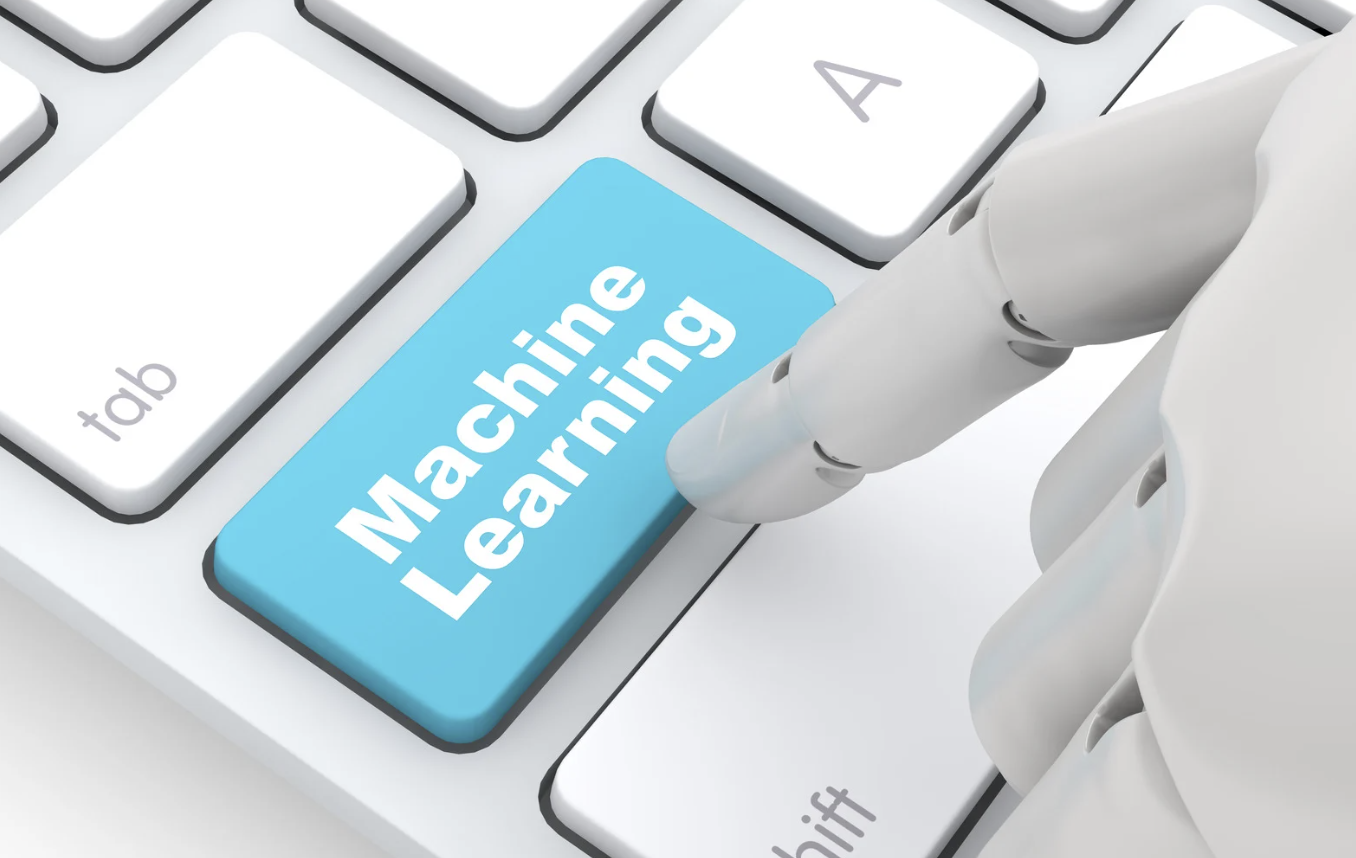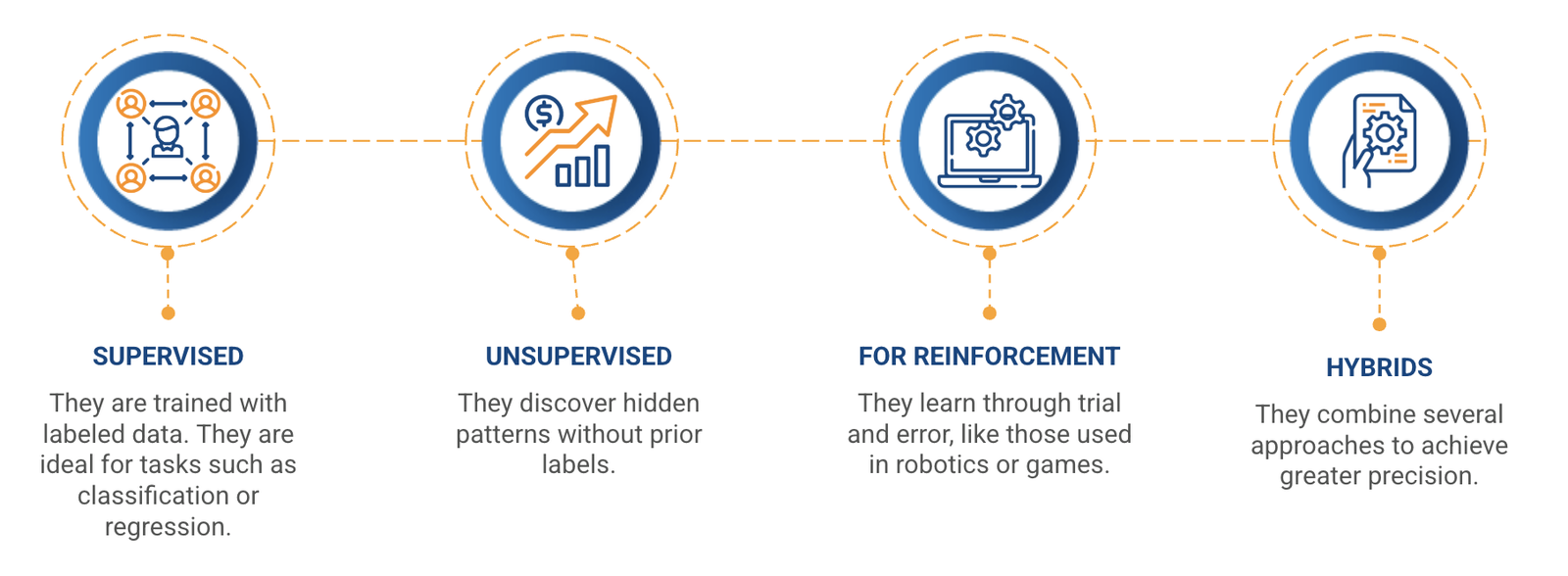
From development to deployment: How a machine learning company builds and launches models
Table of contents
Quick Access

Artificial intelligence is transforming the way businesses make decisions, automate processes, and personalize experiences.
At the heart of this technological revolution are machine learning models, tools capable of learning patterns from data to deliver valuable predictions and recommendations.
For business leaders looking to adopt this technology, it's key to understand how a machine learning development company creates and deploys these models efficiently and scalably.
In this article, we'll explore the entire process: from understanding what machine learning models are to their design, training, and deployment. We'll also discuss the different machine learning models, concrete examples, and how providers like Rootstack can accelerate this technological transformation in your business.

Machine Learning development company: The key partner in your AI strategy
A machine learning development company specializes in designing, training, validating, and maintaining custom artificial intelligence models. These companies not only have deep technical expertise in data science and programming, but also the business knowledge to tailor solutions to each industry.
In Rootstack's case, their focus is on building results-focused AI solutions. They work with companies in sectors such as retail, healthcare, finance, and logistics, helping them leverage their data through machine learning projects that generate real competitive advantages.
Hiring a specialized company allows you to reduce risks, accelerate model development, and ensure successful deployment, leveraging best practices and cutting-edge technologies.
What are Machine Learning models?
Before diving into the implementation process, it's essential to understand what machine learning models are. “A machine learning model is an object (stored locally in a file) trained to recognize certain types of patterns. You train a model with a dataset, providing it with an algorithm that allows it to reason and learn from it,” explains Microsoft in its documentation.
Rather than following fixed instructions, these models identify patterns in large volumes of data to make predictions or decisions.
For example, a model can learn to detect fraud in banking transactions, recommend products to customers, or predict inventory demand. What distinguishes these models is their ability to continuously improve as they are fed more data.
Machine learning models are becoming a key tool for companies looking to automate processes, personalize services, and gain predictive insights.

Scenarios for using Machine Learning models
Machine learning is especially useful in contexts that share certain key characteristics:
- These are tasks that require recurring decision-making or evaluation, and where the goal is to automate the process with consistent results.
- Decision-making rules or criteria cannot be easily defined explicitly or through traditional programming.
- Pre-classified data or historical examples are available that allow linking specific situations with expected outcomes.
Different Machine Learning models
There are different machine learning models, and the choice of one or another depends on the type of problem to be solved, the quality of the available data, and the business objectives.
Among the main types are:
- Supervised models: These are trained with labeled data. They are ideal for tasks such as classification (detecting spam) or regression (predicting sales). “Supervised learning is commonly used for risk assessment, image recognition, predictive analytics, and fraud detection,” they added in an article by IBM.
- Unsupervised models: These discover hidden patterns without prior labels. They are used for customer segmentation or anomaly detection.
- Reinforcement models: These learn through trial and error, like those used in robotics or games. “An agent learns to perform a defined task through a feedback loop until its performance falls within a desirable range. The agent receives positive reinforcement when it performs the task correctly and negative reinforcement when it does it poorly,” they highlighted in a Google Cloud article.
- Hybrid Models: These combine various approaches to achieve greater accuracy.
Rootstack works with these different machine learning models, selecting the most appropriate one based on each client's needs. This customization ensures that the solution is relevant and effective for the specific business objectives.

Creating a Machine Learning model: essential steps
Creating a successful machine learning model requires a clear methodology that encompasses several stages:
- Problem Definition: Identify the business challenge you want to solve.
- Data Collection and Preparation: Obtain relevant data, clean it, and organize it for training.
- Model Selection: Choose the appropriate algorithm (decision trees, neural networks, etc.).
- Training: Use the data to teach the model to identify patterns.
- Validation and Tuning: Evaluate model performance and adjust its parameters to improve accuracy.
- Documentation: Record decisions and tests for future traceability.
A machine learning development company like Rootstack handles this end-to-end process, ensuring the quality of the model and its alignment with the client's goals. Thanks to their experience, they can detect biases in the data, prevent overfitting, and accelerate development cycles.
Deploying a Machine Learning model: From the lab to the live environment
Once created, the next step is to deploy the machine learning model into production. This involves integrating the model into the applications or platforms used by the business, ensuring it runs securely, efficiently, and scalably.
Key deployment phases include:
- Integration with existing systems: API, CRM, ERP, or other tools.
- Pipeline Automation: Use tools like MLOps to facilitate continuous updates.
- Performance Monitoring: Evaluate model accuracy in real time and detect deviations.tions.
- Maintenance and Continuous Improvement: Tuning the model with new data to maintain its effectiveness.
Rootstack implements advanced MLOps practices to facilitate the agile deployment of models in the cloud or on-premises environments. This ensures that companies can begin reaping the benefits of machine learning quickly and with low technical risk.
Examples of Machine Learning models in action
To visualize the real impact of this technology, let's look at some examples of machine learning models deployed by leading companies:
- Retail: A predictive model allows stores to anticipate which products will be in highest demand during certain seasons, optimizing inventory.
- Banking: Algorithms detect suspicious behavior in real time and prevent financial fraud.
- Healthcare: Models that analyze medical images to detect early signs of diseases such as cancer.
- Marketing: Systems that segment audiences and personalize advertising campaigns based on user behavior.
Rootstack has developed and implemented examples of machine learning models across multiple industries, tailoring the solution to each use case. This cross-industry experience allows for the transfer of best practices from one sector to another, providing greater value to customers.

How to take the next step?
The journey from developing to deploying AI models can seem complex, but with the right guidance, it is possible to implement it successfully. A machine learning development company like Rootstack can be your best ally in transforming data into intelligent decisions.
Understanding what machine learning models are, the different machine learning models available, and how to create and deploy machine learning models are fundamental steps to strategically adopting this technology.
If you're ready to explore how these solutions can impact your business, contact Rootstack today and start building a data-driven competitive advantage.
We recommend you this video
Related blogs

A practical guide to integrating AI into existing software products

Where to invest in AI in the next 12 months? A strategic guide for CTOs

The pilot trap: How to scale AI in your company

Step-by-step guide to building an AI-ready software architecture

AI in production: Lessons learned after implementing ML at scale
